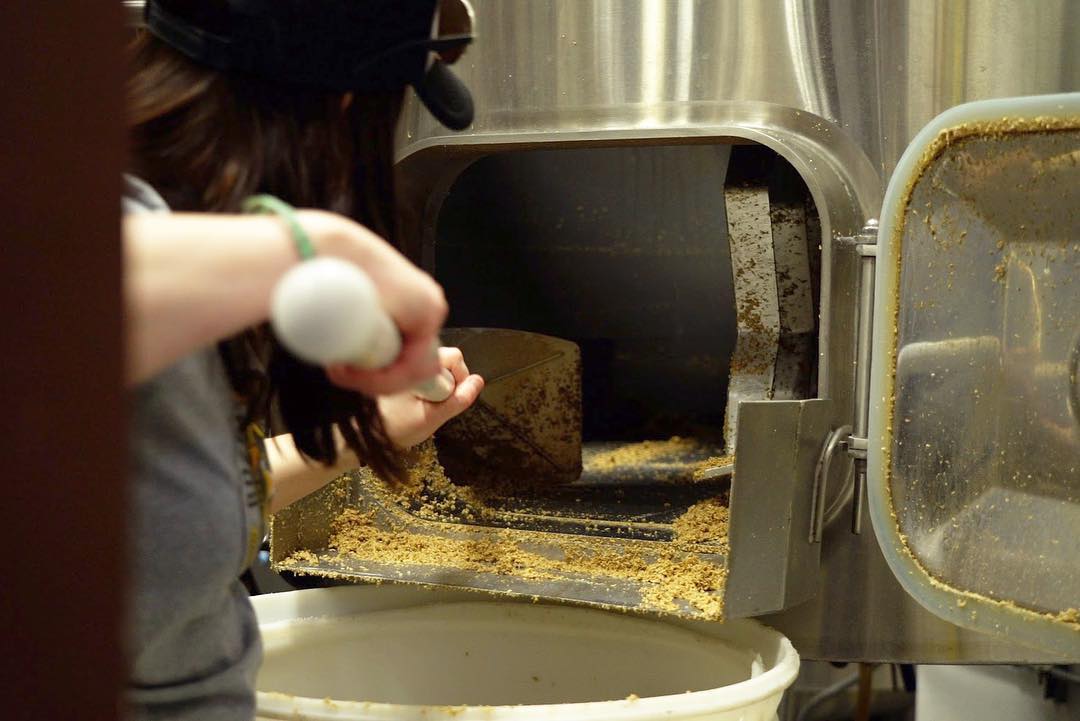By Hannah Turner, Montana State University – Barley, Malt & Brewing Quality Lab
Brewing is the ultimate combination of artistry and chemistry and each brewer utilizes a wide array of ingredients to creatively design interesting beers that are balanced and unique. One such ingredient which can play an important role in balance is Acidulated malt; also known as Sauermalz, acid malt, or sour malt. This specialty malt is a base malt by nature (typically 1.7 to 2.8 SRM in color), but one which has gone through additional acidulation processing. Lactic acid on the malt’s surface adds nuanced flavor to traditional brews such as German pilsners and beyond.
This malt style actually came about as an innovative way for German brewers to have control over their mash pH while also adhering to the purity laws of Reinheitsgebot, which states that beer must only be made with malt, water, hops, and yeast—so no additives like phosphoric or lactic acid in the mash.
Acidulated malts are commonly made by two different processes. Both start with the same malt processing typical for a base malt but finish with steps to enhance or add to the natural lactic acid found on the malt surface. The first method utilizes a fermentation step post-kilning to encourage the growth of lactic acid bacteria already present on the malt, whereas the second method employs additions of a weak, food-grade lactic acid solution as a spray or steep during the germination stage of malting.
The first method is considered to yield complex flavors—albeit more subtle acidity—than the second method. Fermented malts are generally thought to have the capacity for adjusting mash pH by 0.1 to 0.2 points for each 1% inclusion, while the lactic acid-treated malts can adjust in the range of 0.3 to 0.4 points. These changes will all be relative to things like the ability of the brew’s source water to buffer pH changes and the impact of other ingredients in the grist mix.
Mash pH is important, as the enzymes responsible for converting the starchy malt core into sugar for fermentation are most active in their ideal pH range; typically mash pH is targeted at between 5.4 and 5.6. Brewers often stick to small additions of acid malt in the range of 1-10% of the total grist bill.
When determining how much is the right amount, brewers must take several things into consideration: brewing ingredients, desired final pH, and acid perception level they want for the beer style they are making. As an alternative to acidulated malts, brewers can also directly add acidifiers like phosphoric or lactic acid to the mash, depending on their process preference.
Outside of mash pH control, acidulated malt is a brewing tool that can be of use in many beer styles. Just like in culinary applications, acidity can be an important aspect of flavor and can balance or brighten a brew in a very desirable way—think of how adding a spritz of lime juice to your tacos adds to the sensory experience! Acidity can also change how we perceive flavors. For example, a change in pH can move a piney hop flavor to more of a pineapple one, which may be desirable depending on the brew you are making.
A third application of acidulated malt would be assisting in creating sour beers like kettle sours, Berliner Weisse, and Gose beers. These styles turn sour after a dedicated fermentation process that utilizes wild yeasts and/or the manual addition of natural bacteria like Lactobacillus.
However, a brewer can set their sours up for success by using some acidulated malt to lower the mash pH, ensuring a healthy environment for the acid-producing bacteria active in fermentation and making it more difficult for undesired yeasts and bacteria to find a foothold. Small amounts of acidulated malt can even be used as an inoculant post-boil. By steeping the grains in the cooling mash the Lactobacillus already present on acidulated malt can be introduced to start off the desirable sour fermentation.
Hopefully, you have found this journey into malt and beer science interesting. With your next beverage take a moment to reflect on acidity and balance – you can be sure the brewer who crafted your purchase thoughtfully considered the final pH to deliver the desired impact!
This article was originally published in the Montana Craft Beer Connection.


